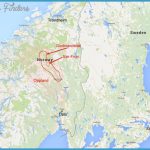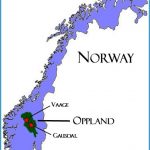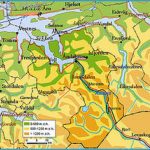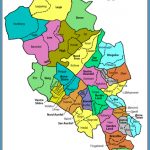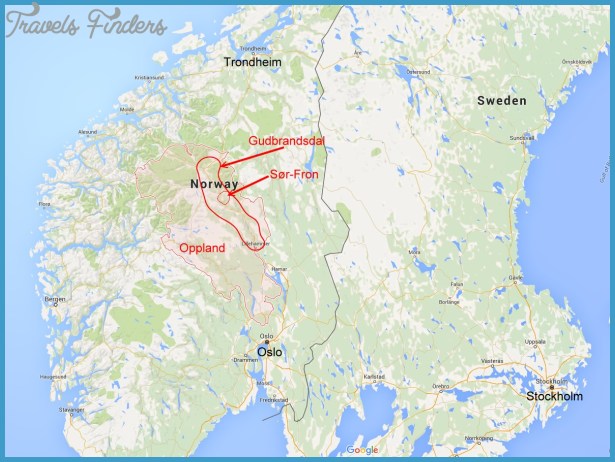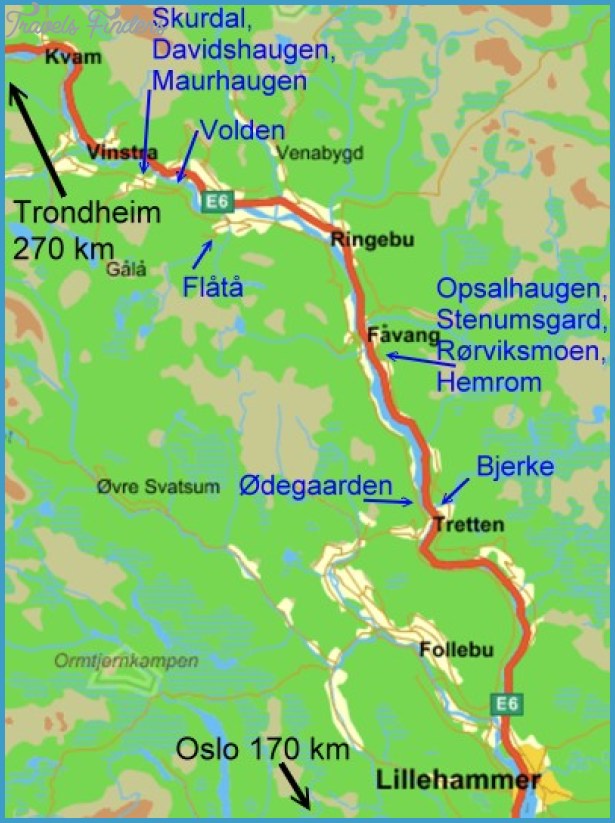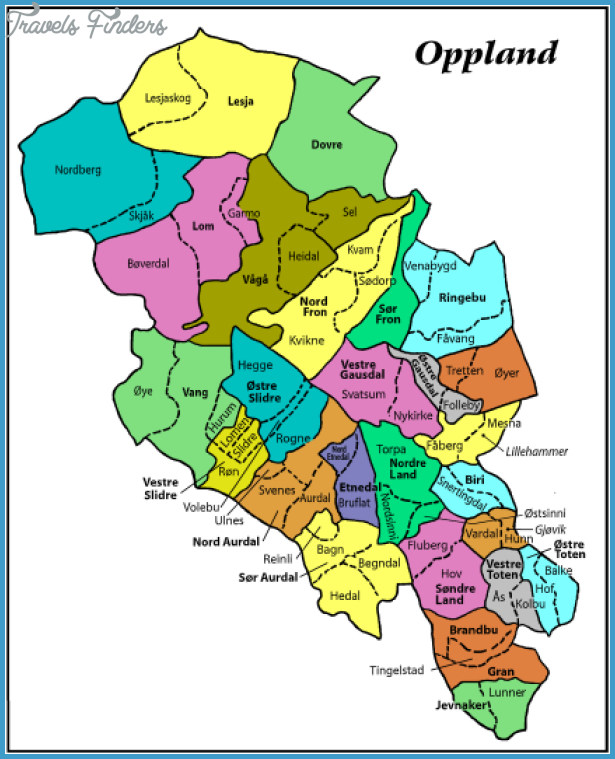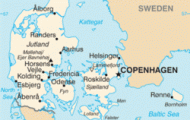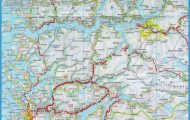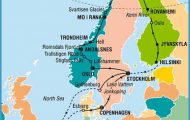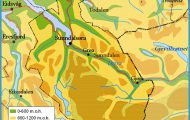County: Oppland fylke.
Turisttrafikkomiteen for Oppland fylke, Kirkegate 74,
N-2600 Lillehammer; tel. (0 62) 5 35 80.
Nord-Gudbrandsdal Turist og Tiltakskontor,
N-2670 Otta;tel. (0 62) 3 11 00, ext. 335. Midt-Gudbrandsdal Reiselivslag,
N-2640 Vinstra;tel. (0 62) 8 11 00, ext. 329.
The Gudbrandsdal, known as the valley of valleys, extends IMW of Lillehammer for some 200 km (125 miles) up the valley of the River Lcigen, lying between the Rondane and Dovrefjell chains to the E and the imposing mountain region ofthe Jotunheim to the W. It is one of the most popular tourist regions of Norway, both in summer and in winter. The people ofthe valley have preserved many of their ancient customs. The region has a mild inland climate with long periods of dry weather.
From Lillehammer (alt. 180 m (590 ft): 175) E6 follows the River Lagen upstream through the Gudbrandsdal. 6 km (4 miles) from Lillehammer is Faberg (alt. 148 m 486 ft), where the LSgen flows into Lake Mjosa; to the right is a steep-sided hill, Balbergkamp (660 m 2165 ft). From here Road 255 runs NW into the Gausdal and Espedal (Peer Gynt Road, Espedal Road). The main road continues to Hunder and beyond this to the Hunderfoss power station (conducted tours). The station is supplied with water by an artificial lake 7 km (4 miles) long formed by a dam (road along top) 280 m (300 yds) long and 1 6 m (50 ft) high. Fish-ladder and trout-breeding station (some 20,000 fish annually). The road along the dam leads to a beautifully situated camp site (huts). To the right lies Asletta, from which a private road (toll) leads NE to Nermo Fjellstue (56 b.), 8 km (5 miles) away, and Hornsjo. 6 km (4 miles) from Hunder, on the hill to the right, stands Oyer church (1 725: interior in pleasant Baroque style). On the other side of the LSgen (bridge) is Oyer (alt. 181 m (594 ft); Nordeng GSrd, 20 two camp sites, with huts). 12 km (7i miles) beyond this we reach Tretten (alt. 191 m (627 ft); pop. 750; Oygaren Pensjonat, 33 Glomstad GSrd and Pensjonat, 5 km (3 miles) away, 50 Optun G&rd and Pensjonat, 6 km (4 miles) away, 35 two camp sites; Mageli holiday village, 6 km (4 miles) N), at the S end of Lake Losna (alt. 182 m (597 ft); 17 km (10 miles) long; good fishing), which was formed by the widening of the River Lcigen. Church of 1728 with old ceiling paintings. Road 254, to the W, joins the Peer Gynt Road. E6 continues along the eastern shore of Lake Losna. In 15 km (10 miles) it comes to the Kirkestuen road junction, with Favang church, originally a stave church but rebuilt in the 17th c. as a cruciform church (restored 1951). 4 km (2i miles) farther on is the village of Favang (alt. 188 m (617 ft); camp site). In another 7 km (4i miles), at Elstad, a road on the right branches off to the Ringebu stave church (2 km 1i miles). The church, originally built about 1200 and enlarged about 1630 (restored 1921), contains a carved altarpiece of 1688. From here it is 3 km (2 miles) to Ringebu (alt. 197 m (646 ft); pop. 1100; Bjorge Hotell, 40 Ringebu Turisthotell, 61 Venabu Hoyfjellshotell, 18 km (11 miles) NE, 120 Spidsbergseter Fjellstue, Venabygd, 22 km (14 miles) N, 50 b ; camp site, with huts).
The Rondane hills from Folldal
From here an excursion can be made on Road 220, which runs N to Enden (38 km 24 miles), then on No. 27 and from Folldal (50 km 31 miles) on No. 29, alongside the beautiful Rondane chain, Norway’s third highest range of hills, part of which is a National Park (Rondeslottet, 2183 m (7162 ft); Hegronden, 2114 m 6936 ft), to Hjerkinn (28 km 17 miles), where we rejoin E6.
Beyond Ringebu E6 follows the course of the L3gen, coming in 1 0 km (6 miles) to the village of Hundorp (alt. 1 93 m 633 ft), with the Gudbrandsdal Folk High School. In the school grounds are graves and standing stones of the Viking period. The octagonal Ser-Fron church (1800) has an electronic carillon. From here it is
8 km (5 miles) to Harpefoss (alt. 223 m 732 ft), where there is an exhibition of furniture and applied art. Hydroelectric powerstation (dam 125 m (140yds) long and 16 m (52 ft) high; the water has a fall of 33 m 108 ft). 7 km (4J miles) farther on is Vinstra (alt. 241 m (791 ft); pop. 2500; Vinstra Hotell, 50 Vinstra Motell, 32 Sodorp GjestgivergSrd, 32 Furuheim Sommerhotell, 92 Fefor Hoifjellshotell, 12 km (7- miles) away, 1 00 two groups of chalets), opposite the junction ofthe Vinstra with the LSgen. Features of interest are Sodorp wooden church (1752) and the Peer GyntgSrd, with 18 old houses (private property). Beyond Vinstra the scenery becomes still grander. 10 km (6 miles) farther on is Kvam (alt. 253 m (830 ft); Vertshuset Sinclair, 20 six camp sites, with chalets), where the decisive battle for the Gudbrandsdal was fought in 1940. The church (1952) contains a 400-year-old Bible; the old church was destroyed in
1 940.14 km (9 miles) N (part of the way on a private road, with toll) are the Rondane Heyfjelishotell (alt. 900 m (2950 ft); 125 b.) and the Rondabiikk (view). To the S of Kvam is the mountain of Teigkamp (1027 m 3370 ft). In another 9 km (5 miles) the main road comes to Sjoa (alt. 285 m (935 ft); youth hostel; three camp sites, with chalets), with the mountain of Torgeirkamp (11 86 m 3891 ft) to the right.
From here Road 257 runs W into the Heidal. 1 5 km (10 miles) along this road, beyond the village of Heidal (many old houses and farms protected as ancient monuments), is the church, rebuilt in 1 938 on the model of the previous church (1752), which was burned down in 1 933. Close by, on the beautiful farm of Bolstad, is a chapel of about 1 600; parts of doorway from an 11 th c. stave church and a crucifix of about 1200.
In another 8 km (5 miles) E6 comes to Kringen (camp site), with a memorial commemorating a victory won by the local peasants in 1612 over a band of Scottish mercenaries (said, erroneously, to have been commanded by a certain Captain Sinclair) which was on its way to Sweden. NW of the village is PHiarguri-kamp (849 m 2786 ft), from which legend has it that one Pillarguri warned
The River Gjende (Gudbrandsdal) the peasants ofthe approach ofthe Scots. From here it is 3 km (2 miles) to Otta (alt. 288 m (945 ft); pop. 2500; Otta Turist-hotell, 14 Rapham Feriehjem, 99 SB; Grand Hotel, 60 six camp sites, with chalets), an important road junction at the confluence ofthe River Otta and the LSgen. It is possible to drive to a point 1 km (f mile) below the summit of Pillar-gurikamp, from which there is a magnificent view. Here Road 1 5 branches off to the left, going via VSgSmo and Lom tothe Nordfjord. A minor road runs 1 3 km (8miles) NEtothe MysuseterHoyfjells pensjonat (50 b.). E6 continues to follow the course of the Lcigen, coming in 3 km (2 miles) to Sel, with a church of 1 782. An area of some 500 hectares (1250 acres) between the church and the station has been transformed within the last 20 years from moorland to fertile arable land. The farm of RomundgSrd nearby, though it was built some 300 years later than the story, was used by Sigrid Undset, the Nobel prize-winner, as the model for JorungSrd, the homestead which plays so large a part in the trilogy Kristin Lav-ransdatter. She also wove the story of LaurgSrd and the Sinclair hut, in which a Scottish captain is said to have spent the night before his death, into the fabric of her tale.
A road on the right (8 km (5 miles); toll) leads to Mysuseter. In 3 km (2 miles) a short path goes off to the curious Kvitskriuprestinn, pyramids of morainic gravel deposits up to 6 m (20 ft) high. From Mysuseter there is a footpath (10 km 6 miles) to the Rondvassbu hut, on the edge of the Rondane National Park (area 570 sq. km 220 sq. miles), a good base for walkers and climbers.
Over the next 14 km (9 miles) the valley becomes steadily narrower and the scenery wilder. At Rosten a narrow road (10 km 6 miles) leads to a group of summer grazing stations (seter) at Hov-ringen, which attracts many visitors in both summer and winter (alt. 960 m (31 50 ft); Hogfjellshotell, 70 Fjellstue,
70 Haukeliseter Fjellstue, 52 Brekkeseter Fjellstue, 65 Putten Seter, 60 RomundgSrdseter, 30 b.). E6 comes in another 8 km (5 miles) to Brennhaug (alt. 449 m 1473 ft). From here there are views to the NE of Storkuven (1452 m 4764 ft) and to the
S of the Jetta range, with the commanding BUho (1618 m (5309 ft): road from Vcigamo).
9 km (5J miles) farther on is Dovre (alt. 485 m (1 591 ft); pop. 400; Dovre Motell, 112 two camp sites, with chalets), in the commune of Dovre (pop. 31 50), with a wooden church of 1740. Off the road to the right is the former royal property of Tofte (17th and 18th c.). 13 km (8 miles) beyond this is Domb&s (alt. 659 m (2162 ft); pop. 1200; DombSs Turist-hotell and Sporthotell, 180 Dovrefjell Hotell, 1 61 SB; youth hostel; six camp sites, with chalets), an important road junction. From here E69 descends the valley of the LSgen to Andalsnes ( 226).
E6 continues NE through the Hinddal and climbs up into the Dovrefjell (highest point Snohetta, 2286 m 7500 ft). Here the coniferous forest gives way to stunted birch trees, which in turn soon disappear. E6 follows the line of the old Royal Road” (Kongsvei), along which for several centuries kings travelled to be crowned in Trondheim. In 10 km (6 miles) the road comes to Fokstua (alt. 982 m 3222 ft). To the left is the beginning of the high moorland region of Fokstumyren, the haunt of many birds (nature reserve). To the right is a view of Fokstuho (171 6 m 5630 ft), which can be climbed in 2-3 hours. E6 continues over the moor, with the Falketind (1 684 m 5525 ft) to the right and, in another 8 km (5 miles), a long lake, the Vaasjo, on the left. At the end ofthe lake a short side road leads to Dovregubbens Hall (food and accommodation). After passing the Avsje on the right the road comes in another 10 km (6 miles) to Hjerkinn (alt. 956 m (3137 ft); Fjellstue, 80 b.), situated in a wide high valley in the Dovrefjell the driest place in Norway, with a rainfall of only some 217 mm (85 in.) a year. To the W is a military area closed to the public (firing range). The Eystein Church was built in 1969 to commemorate King Eystein Magnussen, who had the first hut built here in the 12th c. Stone marking the Royal Road, travelled by 41 reigning monarchs. 1 km (f mile) farther N is the highest point on the road (1025 m 3366 ft). In the Tverfjell to the W are the Folldal mines (iron ore, pyrites, copper). An hour and a half’s walk to the NE is the Hjerkinnhe (1282 m-4206 ft), with superb views of Snohetta, the Rondane range and the Jotunheim. Road 29 goes off on the right to Folldal (27 km 17 miles), from which it is possible either to turn S on Road 27 or to continue via Roros to the Swedish frontier (174 km 108 miles).
After reaching its highest point N of Hjerkinn E6 runs down the Driva valley through the Dovrefjell National Park (rich mountain plant life; musk-oxen and wild reindeer). In 12 km (7miles) it comes to the Kongsvoll Fjellstue (alt. 887 m (2910 ft); inn) the newest of the fjellstuer in the Dovrefjell. 750 m (1 mile) farther on, off the road, is a Botanic Garden. Kongsvoll is the base from which to climb the Sodre Knutsho (1690 m (5545 ft): 3-5 hours), to the E, and the starting point of a footpath (4-5 hours) to the Reinheim hut (key in Kongsvoll), from which Snehetta (2286 m 7500 ft) can be climbed in some 4 hours.
Farther down the Driva valley stretches of the road have had to be blasted from the rock. In 9 km (5 miles) the 1arstig, a section of the old Royal Road (first mentioned in 1182: now a footpath, offering magnificent views), branches off on the E. 4 5 km (3 miles) farther on, to the right, is the Drivstua (alt. 680 m (2230 ft): accommodation). Beyond this, on the left, is a view into the Amotsdal. The scanty stands of birches now give way to coniferous forest. 9 5 km (6 miles) beyond the Drivstua Magalaupet, a gorge through which the Driva tumbles and foams for a distance of some 100 m (110 yds) is reached on the old E6, which branches off on the left (camp site). Then comes Rise, with an Iron Age cemetery. Close by are the Smedgarden camp site and Driva railway station. A road on the right (toll) leads into the beautiful mountain scenery of Loseter (1100 m 3600 ft). To the NE rears up the Sisselho (1621 m (5319 ft): climbed from Oppdal in 3 hours). The road then reaches Oppdal, a vacation resort and road junction. E6 continues NE towards Trondheim (122 km 76 miles). Road 16 branches off on the left and descends the Sunndal (261) to Kristiansund (165 km 103 miles).
The Peer Gynt Road (91 km 57 miles) offers an attractive alternative to E6 between Lillehammer and Vinstra (7 km (4 miles) longer; tolls). From Lillehammer take E6 as far as Fa berg (6 km 4 miles), and then turn left into Road 255. In 3 km (2 miles) it comes to the Faberg church (1727: runic stone), and
11 km (7 miles) beyond this to Aulestad, with an old Viking homestead which was acquired by Bjorn-stjerne Bjornson in 1874. The property now belongs to the state and is managed by Bjornson’s grandson (open May-September: museum). At Segastad (2 km H miles) Road 255 continues W to Vestre Gausdal: the Peer Gynt Road runs N on Road 254. In 5 km (3 miles) it comes to Qstre Gausdal, with a stone medieval church. Nearby is the presbytery (now uninhabited), the largest in Norway.
AtSvingvoI(alt. 480 m (1575ft); campsite) Road 254 goes off on the right to Tretten (8 km 15 miles). The Peer Gynt Road runs NW (8 km 5 miles) to Skeikampen and Gausdal (alt. 800 m (2625 ft); Skeikampen Hoifjellshotell, 120 SB; Gausdal Hoifjellshotell, 200 SB, SP; campsite), at the foot of Skeikampen (1123 m (3685 ft): chair-lift, magnificent views). Then on via Froysehogda (970 m (3183 ft): beautiful view of the Gausdal) and Fagerhey (1018 m 3340 ft) to Rauhagen, at the highest point on the road (1053 m 3455 ft): extensive views, with the Rondane range and the Dovrefjell (Snohetta) to the N and the Jotunheim to the NW. In another 8 km (5 miles) the road comes to Skasrvangen, where a private road (10 km 6 miles) goes off on the right to H undorp on E6. Then, 5 km (3 miles) farther on, the tourist resort of Gola and Wadahl (GolS Hoifjellshotell, 157 SB), 930 m (3050 ft) above the Gol3vann (lookout tower). From Vollsdammeh it is worth making a detour W to Dalseter (21 km 13 miles). The main road continues to Fefor (Hoifjellshotell, 130 SB), with Lake Fefor to the left and Feforkampen (1175 m (3855 ft): the climb takesf hour and offers wide views ofthe Dovrefjell and Jotunheim). From Vollsdammen it is 10 km (6 miles) to Vinstra.
The Espedal Road (117 km 73 miles) is another attractive, rather longer, alternative to E6 between Lillehammer and Vinstra. As far as Segastad (22 km
14 miles) it coincides with the Peer Gynt Road, and from there runs W to Vestre Gausdal (pop. 400), which has a wooden cruciform church of 1784. From here a road (open only in summer) runs SW through beautiful and varied scenery, with numerous bends and fine viewpoints (at altitudes of up to 1000 m 3300 ft), to Fagernes (84 km 52 miles). The Espedal Road now continues for 22 km (14 miles) through the Svatsumdal to Svatsum (octagonal wooden church of 1860). 13 km (8 miles) farther on, at the S end of the Espedalsvatn (on left), is the remarkable cave system known as Helvete (Hell); the largest chamber measures 100 by 40 m (330 by 130ft). 2 km (H miles) beyond this is the abandoned nickel mine of Vassen-den, and 3 km (2 miles) beyond this again the Strand Fjellstue (alt. 730 m (2395 ft); inn; beautiful view of the lake). In another 5 km (3 miles) the road comes to Megrund Gard, the oldest farm in the Espedal (c. 1785). From here it is 4 km (2 miles) to the Espedalen Fjellstue (730 m (2395 ft); inn; camp site; good fishing), with a church of 1974. There was a nickel mine here until 1874. At Dalseter, 4 km (2 miles) farther on (Hoyfjellshotell, 130 SP, SB), the side road from Vollsdammen on the Peer Gynt Road comes in. Tothe right there is a view oiRuten (1513 m 4964 ft). 3 km (2 miles) beyond this the road reaches its highest point (972 m 3189 ft): to the W are the Sikkilsdalshe (1783 m 5850 ft) and the Heimdalsho (1848 m 6063 ft), to the N the Graho (11 56 m 3793 ft). To the left of the road is the artificial lake of Olstappen. At Kamfoss is a dam; and when the water is high the overflow forms a beautiful waterfall. 10 km (6 miles) from Dalster, at SkSbu, the Espedal Road joins Road 255. The Jotunheim road (private: toll) goes off on the left to Bygdin; Road 255, to the right, pursues a winding course, with beautiful views, via Kvikne (church of 1764) to Vinstra (26 km 16 miles).

